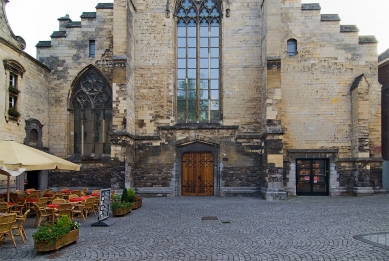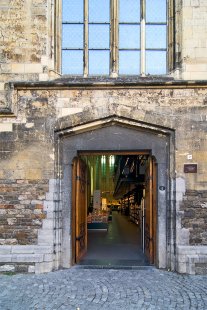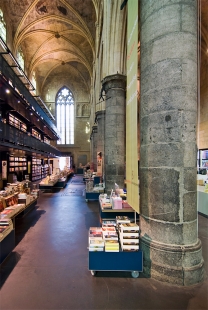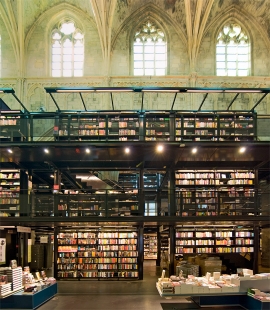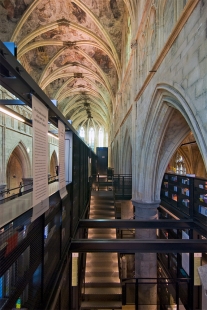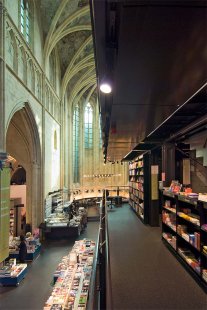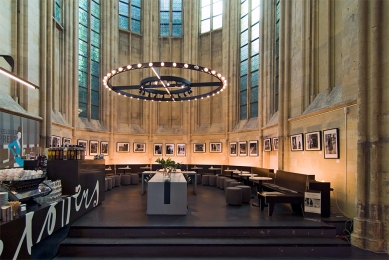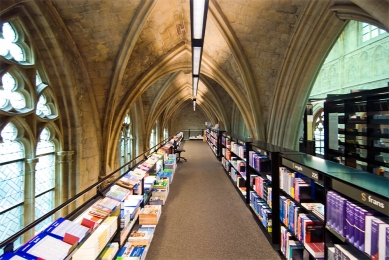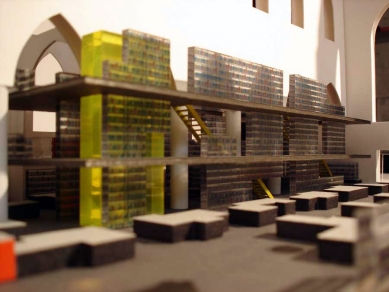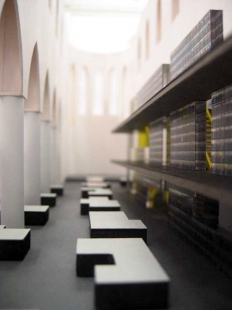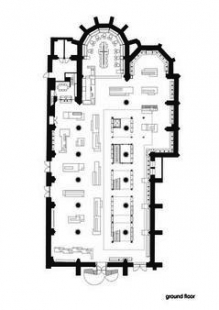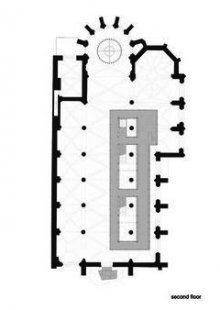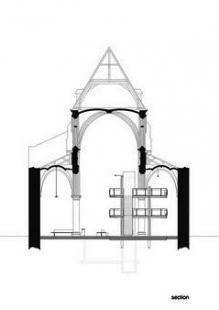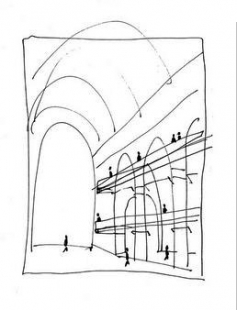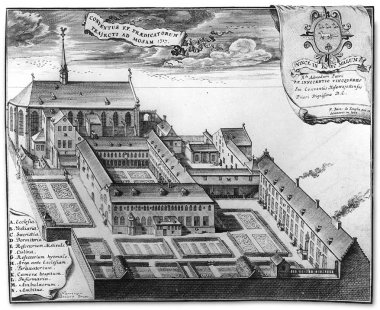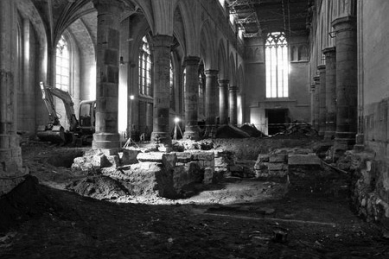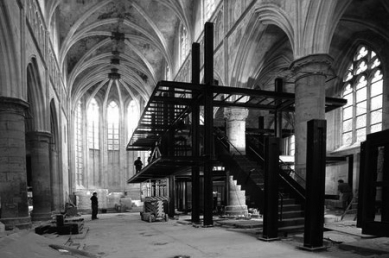
Bookstore Selexyz Dominicanen

 |
"In the beginning was the bestseller"
Is this the world's finest bookshop?
'This is Holland," a sales assistant tells me, as I scan bookshelves generously stocked with English as well as Dutch works. "We are not so religious. Yes, we have more mosques now - but we have also a lot of empty churches." And here's a great thing to do with such atmospheric yet dormant spaces. I'm in central Maastricht, standing in what must be one of the finest bookshops in the world. That's quite a claim. Yet who could fail to be thrilled by this extraordinary venture?
Selexyz Dominicanen - a store created from a merger between the town's Bergman's bookshop, the Academische Boekhandel, and the Dutch Selexyz bookshop chain - is housed in the thrilling setting of a 13th-century Dominican church. This haunting building was once part of a friary knocked about over the centuries by various invading armies. Right up until last Christmas, in possibly its strangest incarnation, it was being used by the citizens of Maastricht as a glorious, or possibly inglorious, indoor bike pound. As for the Dominicans, they were driven out by Napoleon in 1794. After a brief spell as a parish church, this magnificent Gothic prayer hall - it has no tower or transepts, in keeping with the rules of the clerical order that built it - was turned into nothing holier than a warehouse.
Today, the church, consecrated in 1294, could hardly be more popular. The beautifully restored building is an attraction in its own right, and yet the installation of a towering, three-storey black steel bookstack in the long, high nave, together with a fashionable if somewhat noisy cafe in the choir, works extraordinarily well. Church and bookshop look as if they might have been made for one another.
As more European churches become redundant, we need to dream up new uses for them. Happily, books and churches have always gone together: in the beginning, as St John tells us, was the Word; the word was, in time, written down in books. At first, these were mighty tomes read by priests alone. Such was their value that, at the time this church was built, they were chained to vaulted library walls.
The bookshop installation here is by the Dutch architects Merkx + Girod, founded in 1998 and led from Amsterdam by Evelyne Merkx and Patrice Girod. The dominant new element in the church is the high-rise bookshelf structure stretching up to the stone vaults. Popular books are kept on lower shelves, while academic, esoteric and theological works are kept closer to heaven. These are reached by stairs within the sleek, well-made bookstack, although there is also a lift.
 |
The sheer scale of the black steel bookstack was necessary for two reasons. One was that a spread of shelves along and across the nave would have detracted from its character; the more worldly reason was that Selexyz needs 1,200 sq m of selling space to make the shop's finances add up. Given that the church has a floor area of just 750 sq m, the only way to go was up. The bookstack, though big, is not one great, irredeemable slab. You can walk through and up it, and it frames views of the nave on both sides beyond it. The bays of the nave are also neatly lined with bookshelves, so what you see through the bookstack are rows of books beyond rows of books.
It has some similarities with a normal bookstore, though. The most popular works, the bestsellers and the ones on special offer, are stored on low tables, set about with minimalist modern chairs, on either side of the main bookstack. All this works well, and no sin is committed against the fabric or the spirit of the church. The one booming note that, inevitably, brings the core values of the 21st century to life and distracts from the great theological works stacked up on the high shelves is that of the hissing of coffee machines and the clanking of china cups. Dominican plainchant has clearly given way here to orders for cappuccinos and the gurgling of hot milk as it is frothed to make the drink that takes it name from the garb of Capuchin monks. The central feature of the cafe is a long, cruciform table lit by a lamp suspended from the stone vaults in the guise of a modern halo. In centuries gone by, such cheekiness - a table in the shape of the crucifix - would have been seen as blasphemous. Today, it seems fine, as does the offer of a glass of red wine from the chic bar. Despite its cafe and the large numbers of people who come here, the atmosphere is not unruly and does seem to calm the nerves.
This Maastricht bookshop is Merkx + Girod's finest work. And its transformation is, I think, a lesson to us all. Yes, we need to think up new uses for old churches, but we must also consider ways of converting them without altering their venerable fabric. A church is a prayer set in stone, and even if we do not use them as they were intended, their very presence is reassuring and comforting, reminding us that there is more to life than getting and spending, trade and toil. The Dominican church in Maastricht strikes just the right note. Its architects deserve a blessing.
Jonathan Glancey for The Guardian, April 9, 2008
3 comments
add comment
Subject
Author
Date
:)
veisser
05.01.10 10:05
to se mi líbí
kamil
07.02.10 10:04
Knihkupectví u sexy dominikánů (velmi, velmi volně “přeložen
Dr. Lusciniol
08.02.10 10:48
show all comments


